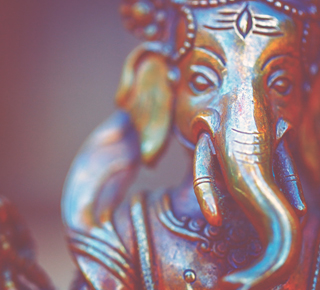About Hinduism
Hinduism is the fourth most-practised religion in the world and originated in the Indian subcontinent. Many adherents call it Sanātana Dharma – “the eternal law” – because it is more than a religion: it’s a way of life built on ethical conduct, devotion and knowledge.
As the oldest surviving major faith, Hinduism now has over a billion followers. Around 90% live in South Asia – especially India, Nepal, Bhutan and Sri Lanka – with significant communities in Mauritius, Bangladesh, Indonesia, Pakistan, Malaysia, Singapore, the United Kingdom, Fiji, Canada, Guyana, Suriname and Trinidad and Tobago. The tradition spread mainly through migration, since evangelism and conversion are not central features of the faith.
The word “Hindu” derives from the Persian form of Sindhu, the ancient name for the River Indus. Rather than a single doctrine or founder, Hinduism is a family of traditions that developed over millennia. Its early roots include beliefs from late Neolithic and Harappan cultures and, later, the sacred Vedas. Over time it absorbed ideas from related Indo-European faiths and local practices across the subcontinent.
By the 4th century BCE, Vedic Hinduism had spread widely, influencing and being influenced by regional beliefs. During the Gupta “Golden Age” (4th–6th centuries CE), Hindu philosophy and practice were codified: epics such as the Mahābhārata and Rāmāyaṇa took their classical forms, and guidance on worship, imagery and temple architecture flourished. Centuries of encounter with Islamic rule, Sufi movements and the Bhakti tradition shaped devotional life, while the colonial period brought social reform and revivalist currents.
Key ideas include Dharma (ethical duty), Saṃsāra (the cycle of birth, death and rebirth), Karma (action and consequence), Moksha (liberation from saṃsāra) and the Yogas (paths to spiritual realisation). Many Hindus affirm a supreme reality, Para-Brahman, with the individual soul (Ātman) ultimately one with it. Traditions may focus devotion on deities such as Viṣṇu, Śiva or Śakti, and scriptures describe divine manifestations (avatars) and celestial beings (devas).
Ready to dive in? Start with the ten avatars of Viṣṇu in Dashavatar, explore story and moral teaching in Mahābhārata – The Epic, get grounded with The Basics of Hinduism, and deepen your knowledge of sacred texts in Vedas, Purānas and Upaniṣads.
See the official Government guidance: Hinduism.
Frequently Asked Questions
Is Hinduism monotheistic or polytheistic?
Many Hindus believe in one supreme reality (Para-Brahman) expressed through many forms. Worship may focus on deities like Viṣṇu, Śiva or Śakti, but these are often understood as aspects of the same ultimate truth.
What are the most important Hindu scriptures?
The Vedas are foundational, with later texts including the Upaniṣads, the Mahābhārata (containing the Bhagavad Gītā), the Rāmāyaṇa and the Purāṇas. Our quizzes on the Vedas, Purāṇas and Upaniṣads give a friendly introduction.
How can I begin learning about Hinduism?
Start with core ideas – Dharma, Karma, Saṃsāra and Moksha – then explore stories and practices through our quizzes. Short, regular sessions build vocabulary and understanding, whether you’re new to the subject or revising for school.
Author: Siddarth Bhattacharjee (Respected Hindu Scholar and Educator)























